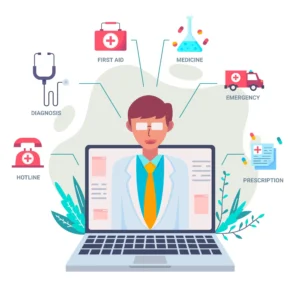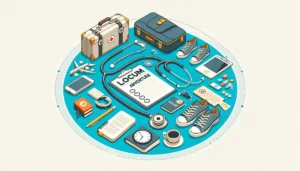In the past, locum tenens primarily involved individual practitioners providing short-term coverage for absent colleagues. While this model offered flexibility and relief for overburdened healthcare systems, it posed challenges such as limited availability and lack of continuity of care. Examples of traditional locum tenens arrangements include short-term physician assignments at rural hospitals or vacation coverage for primary care providers.
Evolution of Locum Tenens Practice Models
With advancements in technology and changes in healthcare delivery, locum tenens practice models have undergone significant transformation.

Introduction of Technology: The advent of telemedicine and digital health platforms has revolutionized locum tenens, allowing healthcare professionals to provide remote services and consultations across geographic boundaries.
Emergence of Virtual Locum Tenens: Virtual locum tenens services enable physicians to deliver care from anywhere, leveraging telecommunication tools to connect with patients and healthcare facilities in real-time.
Hybrid Models: Some locum tenens agencies now offer hybrid models that combine traditional on-site coverage with virtual support, providing greater flexibility and scalability for healthcare organizations.
Specialized Locum Tenens Services: As the demand for specialized medical expertise grows, locum tenens agencies are expanding their offerings to include niche areas such as telepsychiatry, tele-radiology, and tele-dermatology.
Benefits of Modern Locum Tenens Practice Models
The evolution of locum tenens practice models has brought numerous benefits to healthcare providers and institutions.

Increased Flexibility: Healthcare professionals can customize their work schedules and locations to achieve a better work-life balance and avoid burnout.
Enhanced Access to Healthcare: Virtual locum tenens services improve access to care for patients in remote or underserved areas, bridging geographical gaps and reducing disparities.
Cost Efficiency: By leveraging virtual technologies and outsourcing staffing needs, healthcare organizations can reduce overhead costs associated with recruitment and onboarding.
Improved Work-Life Balance: Modern locum tenens models empower physicians to design their careers around personal and professional priorities, fostering greater job satisfaction and longevity.
Challenges and Considerations
Despite the numerous advantages, modern locum tenens practice models also present unique challenges and considerations.

Regulatory Compliance: Healthcare providers must navigate complex licensing and credentialing requirements when practicing across state lines or internationally, ensuring adherence to local regulations and standards of care.
Quality Assurance: Maintaining continuity of care and upholding clinical standards can be challenging in virtual settings, requiring robust protocols for supervision, documentation, and communication.
Integration with Traditional Practices: Integrating locum tenens providers into existing care teams and workflows requires effective coordination, communication, and cultural alignment to ensure seamless collaboration and optimal patient outcomes.
Future Trends in Locum Tenens Practice Models
Several trends are shaping the future of locum tenens practice models and healthcare delivery.

Telemedicine Integration: The integration of telemedicine into locum tenens practice models will continue to expand, enabling greater access to specialty care and remote consultations.
Data Analytics: Leveraging data analytics and predictive modeling can help match healthcare professionals with patient needs more effectively, optimizing resource allocation and improving healthcare outcomes.
Professional Development Opportunities: Locum tenens providers will have access to a wide range of professional development opportunities, including virtual training programs, peer mentoring networks, and continuing medical education resources.
Conclusion
In conclusion, the evolution of locum tenens practice models reflects the dynamic nature of the healthcare industry and the ongoing quest for innovation and efficiency. By embracing technology, adapting to changing patient needs, and fostering collaboration among stakeholders, we can ensure that locum tenens continues to play a vital role in improving access to quality healthcare for all.
FAQs:
1. What is locum tenens?
Locum tenens refers to healthcare professionals temporarily filling in for their peers in various clinical settings to address staffing shortages or provide specialized expertise.
2. How has technology impacted locum tenens practice models?
Technology has revolutionized locum tenens by enabling virtual consultations, remote monitoring, and telemedicine services, expanding access to care and improving efficiency.
3. What are the benefits of modern locum tenens practice models?
Modern locum tenens models offer increased flexibility, enhanced access to healthcare, cost efficiency, and improved work-life balance for healthcare providers and institutions.
4. What challenges do locum tenens providers face?
Locum tenens providers must navigate regulatory compliance, maintain quality assurance standards, and integrate effectively into existing care teams and workflows.
5. What are the future trends in locum tenens practice models?
Future trends in locum tenens practice models include further integration of telemedicine, leveraging data analytics for improved matching of providers and patient




